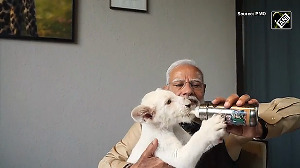The word forex or FX or foreign exchange market is referred to the place where international currencies are traded.
Since the introduction of exchange traded forex futures contract in 1972 at the Chicago Mercantile Exchange, the ever increasing transaction volume and participation has established the popularity of forex in the world.
Accounting to the volume of the foreign exchange trading in the world, it is by far the largest financial market in the world, and includes trading among large banks, central banks, currency speculators, multinational corporations, governments, and other financial markets and institutions.
The average daily trade in the global forex markets currently exceeds a whopping $1.9 trillion.
Almost all transactions in the world are done by means of currencies, so the minute fluctations in the value of currency can cause huge impact in a transaction. But after the introduction of currency futures, the situation has fully changed. Earlier, according to the the fluctuations of the currency the tranaction could have become favourable or unfavourable, but the situation has changed now.
Traders can now change the unfavourable situation to a favourable one through hedging. Hedging has become very common in all cross country transactions. The futures facilitate the buy /sell opportunity in almost all currencies.
Almost all the macro economic factors can influence the currency movements, like government budget deficits or surpluses, balance of trade levels, inflation levels, economic growth and health and also political stability. So from the uncertainities arising out of these, currency hedging would protect the traders.
The unique qualities of forex market favourable for currency trading are:
- Trading around the clock
- Trading volume
- Extreme liquidity of the market
- The large number and variety of traders in the market
- Geographical dispersion
In India, foreign exchange trading increased by 38% between April 2005 and April 2006 and has more than doubled since 2001
This indicates the participation of different segments of the market and the utility of forex trading and economic developments in the world especially in the Asian countries. The fast growth in forex is due to the growing importance of foreign exchange as an asset class and an increase in fund management assets, particularly of hedge funds and pension funds.
Recently, futures trading has been introduced in Indian Rupee. The Indian Rupee contract trading started in DGCX on June 7. This is the first time in the world that an Indian Rupee currency contract is open for trading in an organised exchange.
The launching of rupee/dollar futures in DGCX should benefit investors to hedge their exposure in the markets in the Indian markets. Further there is a good opportunity in interest rate arbitrage too.
In DGCX, each Indian rupee contract represents two million rupees. Prices would be quoted in US Cents per 100 Indian Rupees, with a minimum price fluctuation of 0.000001 dollars per rupee ($2 per contract).
The transaction volume and participation of forex traders is expected to increase further in coming years, due to the uncertainty in economic changes and currency fluctuations in the world.
All these point towards the likelihood of a situation where an equal number of currency trade takes place corresponding to every commercial transaction in the world.
Biju Thomas is Head, Commodity Online Research. He can be contacted at research@commodityonline.com






 © 2025
© 2025